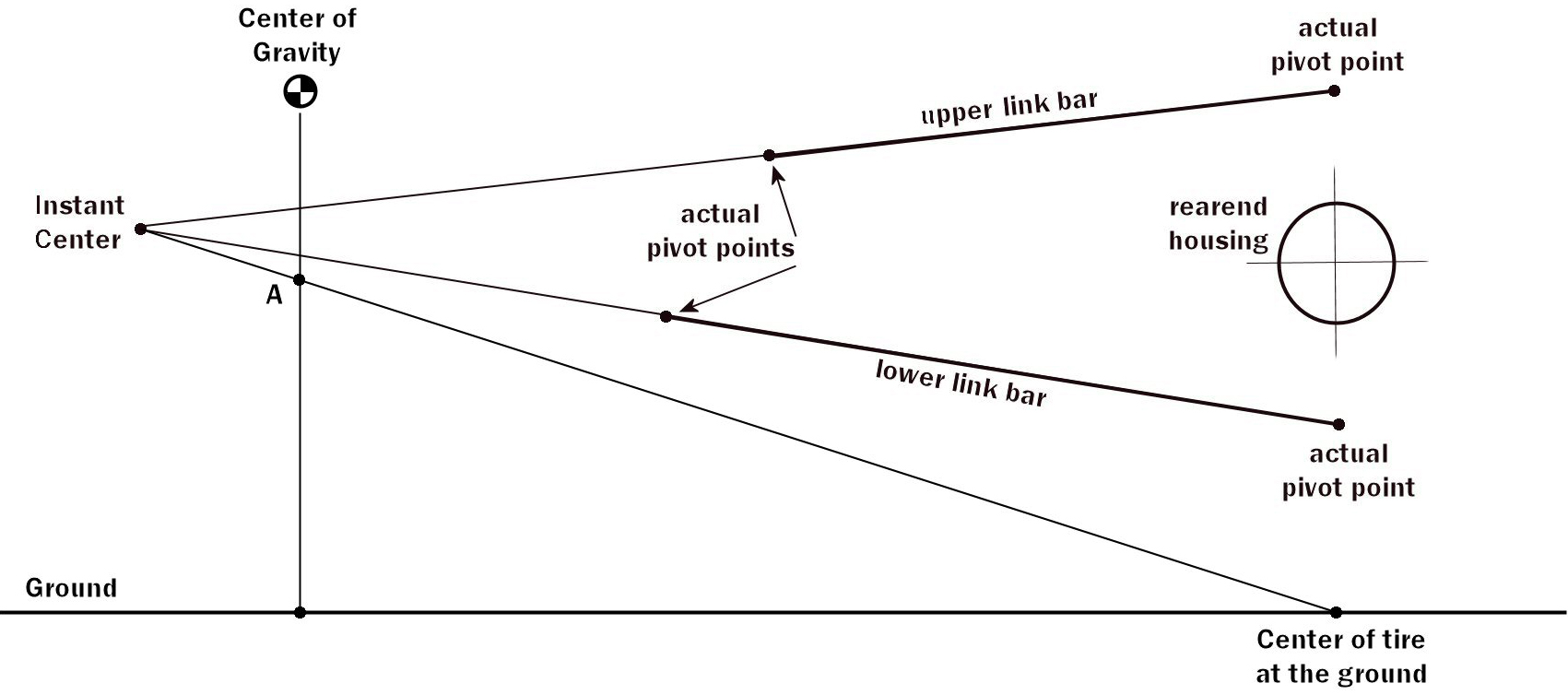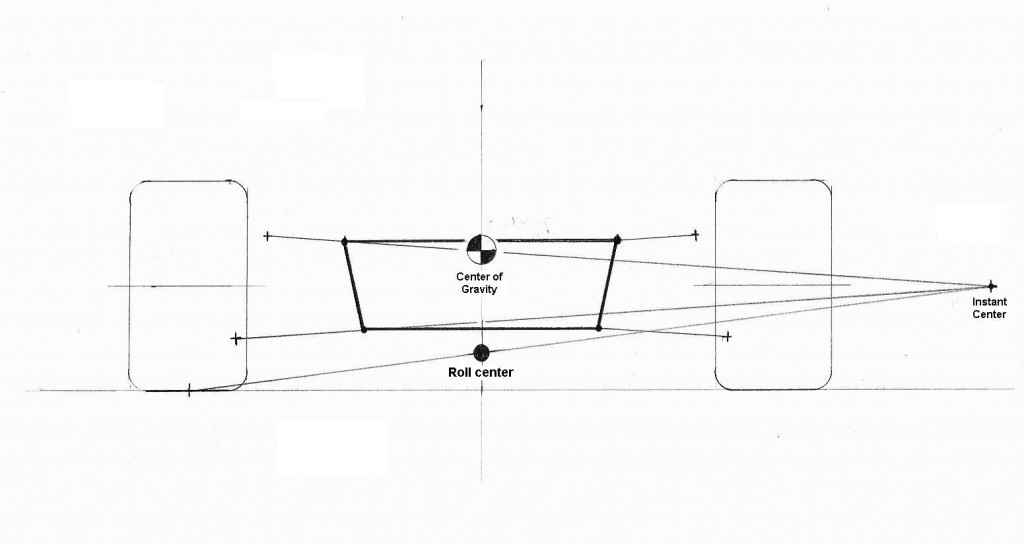Instant Center
Any time two or more links, bars, arms, or any other type of locating device are used in conjunction with each other (think A-arms or 4-link bars), those parts will have an instant center (IC.) The IC is found by extending an imaginary line through the points of each individual locating device until they meet the imaginary line of the other related locating device. The point at which they meet is called the instant center or instantaneous center. Take for example a simple 4 link: from a purely side view the 4 link appears to have only 2 links. If you were to extend an imaginary line through the pivots of each individual bar, at some point those two lines will cross. The placement of the IC is what determines where the forces generated by the tire/rearend relationship will be transmitted into the chassis. By moving the IC front to rear or up and down, you will change where the energy is applied to the chassis and in turn, increasing or decreasing traction during certain types of driving. It is absolutely paramount that you understand how the IC is calculated and that it is a necessary tool for suspension design if you plan to move forward.

This shows a side view of a 3 or 4-link suspension (you can’t tell how many bars the system has from a side view) with the front of the vehicle being on the left. You can see that the upper and lower bars have a line drawn through them until the meet at the IC (the angles of the bars have been exaggerated to fit the IC in the picture). In this case, the IC is being used to calculate anti-squat, but that is for another article.

This is the front or rear view of an unequal length A-arm suspension (the most common type of A-arm suspension). The lines have been extended through the upper and lower Arms to find the IC and used to calculate roll-center.